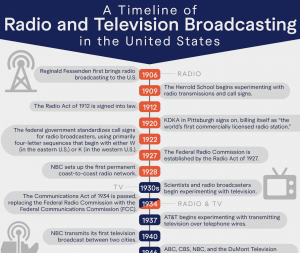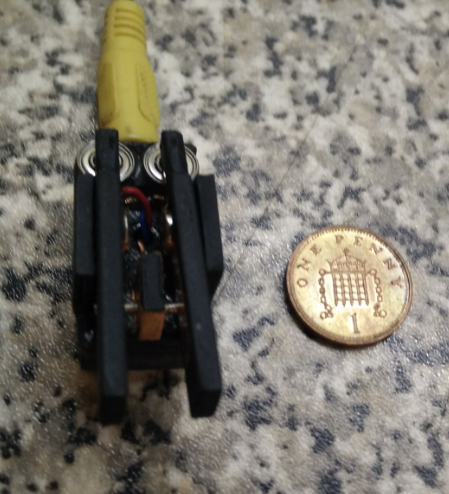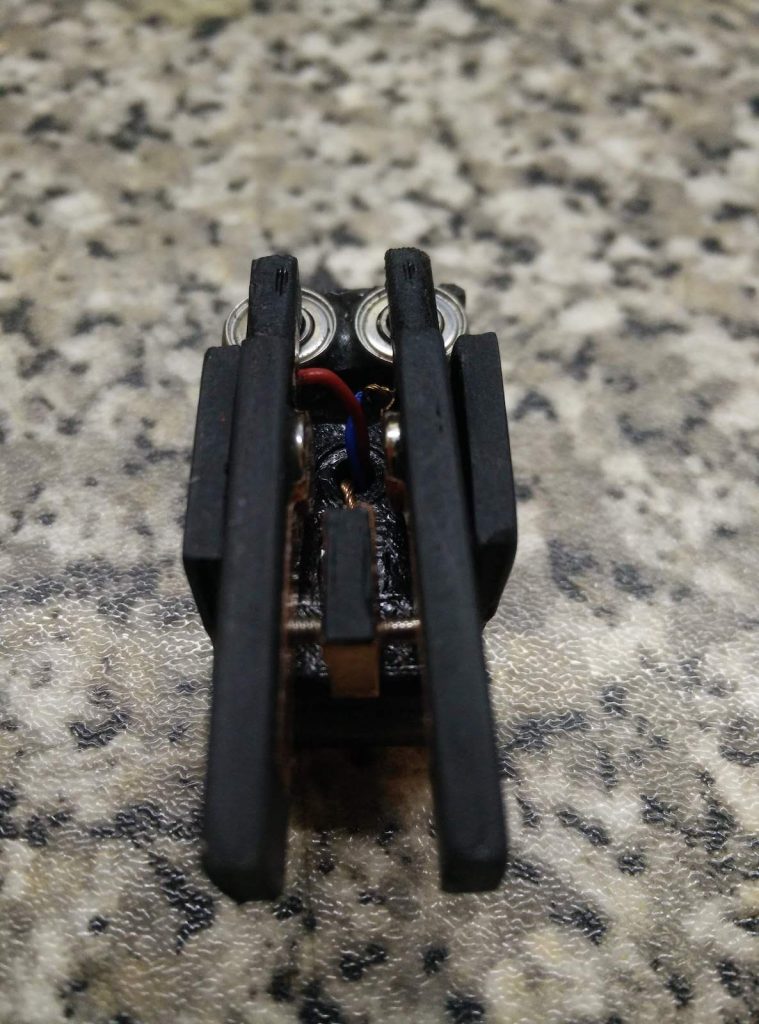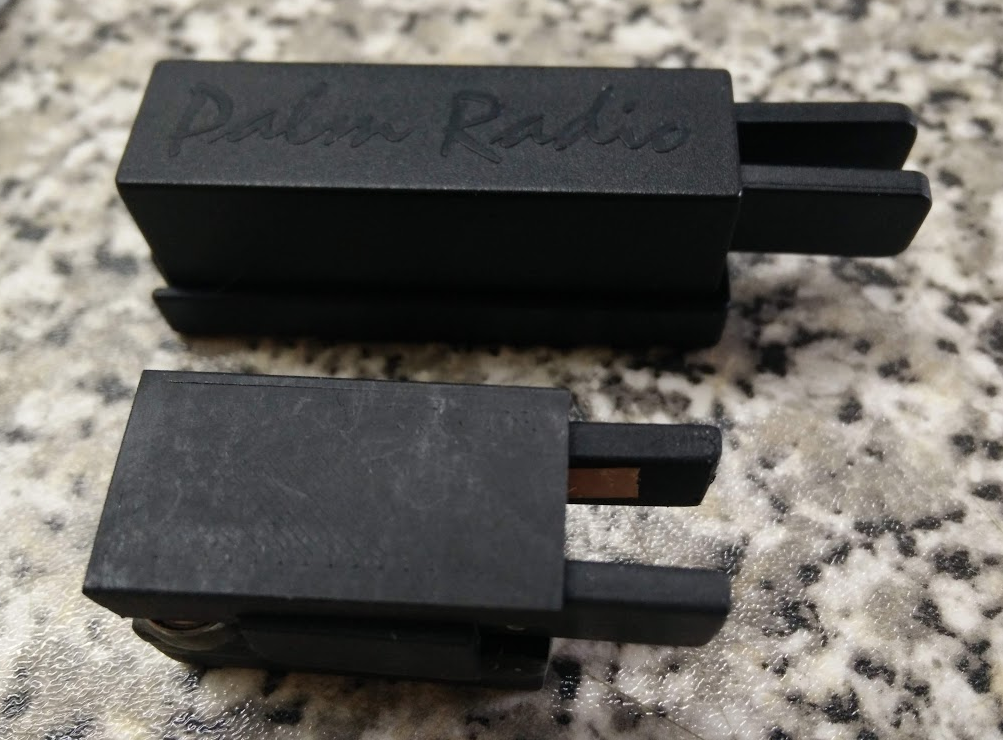LIDS CW – The Less Involved Data Society (original) (raw)
A shout out to North Mountain Institute student Noah, who shared with us a little infographic on Broadcasting and its History in the US that he and his father discovered while researching ham radio and broadcasting for an educational project with his fellow students under tutor, James O’Reilly.

Radio and Television Broadcasting info graphic extract
You can checkout the historical timeline at https://wyomingllcattorney.com/Blog/Business-Studies-Broadcasting-History.
We wish Noah and his classmates all the best and hope that the Ham Radio bug bites…we need more young people in the hobby and it’s a great grounding in technology.
It’s with great regret I announce the demise of the Lidspotter feed on Twitter – Too much is broken now, and the API doesn’t work any more. I knew this would happen eventually once Elon got his paws in the workings…
There is some good news however, the Telegram feed is still up and running, and faster than twitter ever was!
Hope you can join at https://t.me/LidSpotters
The other option is Fabian’s club spotter at https://rbn.telegraphy.de/ which also has a Lids section.
Kit, G0JPS
And what a lovely callsign it is.
Congratulations to Fabian (DJ1YFK, Lid #127) who has done so much for the CW community, with the LCWO and CW Club RBN spotter websites, well we can all use the spotter to keep an eye out for Fabian’s new callsign to add to our logs. See you on the air, OM 🙂
Are you keen to get on air with your key but still feeling a bit nervous that a QRQ ‘machine-gun’ is going to answer you? Are you struggling to find QRS CQ calls? Perhaps you’re confident on the key and want to support others?
Well read on…
In 2021 a scheme has started among the world’s most popular CW clubs to get supportive, QRS Operators active during known periods for you to go and find. The ‘Giving Back’ scheme aims to get operators on-air for stress-free QSOs, targeted at new or nervous operators (or, indeed, simply people wanting to improve their skills) at 7PM local time on 40 meters (7.035-7.045 MHz) and/or 80 meters. Don’t forget you can find QRS CQs or hunt out Operators from the CW clubs including ours by using the RBN dashboard at https://rbn.telegraphy.de provided by the wonderful Fabian Kurz, DJ1YFK.
The Giving Back programme is also looking for volunteers from all of the global CW clubs to take part and get on-air during regular slots so why not offer to give something back on behalf of LidsCW and volunteer between 30 mins and an hour each week to help your fellow hams with an on-air QSO.
You can check out the Operating Schedule at https://cwops.org/giving-back/.
If you’d like to volunteer then drop Rob Brownstein (K6RB) an email at k6rb58@gmail.com letting him know what day you could operate each week and let him know your are volunteering on behalf of @lids_cw so we can be seen to be doing our bit. You don’t have to be an awesome Fist, just patient and encouraging with others…that will be awesome enough!
The global pandemic and the resulting lockdown has changed all our lives. For some it has been business as usual…just with more PPE or working from home. For others it has meant time off work, either voluntary or enforced and the possibility of some spare hours.
One enterprising ham has taken the opportunity to create a video CW training course and it’s really rather good. Check out Matt, M0PTO’s ‘Lockdown Morse‘, a series of 28 videos from 30 minutes to ~1 hour which start at the beginning and take you through ‘head reading’ and basic QSO elements.
There are some nice touches in this series of videos including things like actually training you to ignore characters you don’t recognise…a really important skill in CW. Character speed is good, helping you to learn to recognise the characters at a reasonable speed but with Farnsworth spacing to give you some thinking time.
I think Matt has created a useful learning resource here. The YouTube format works well…Matt paces the training well and you can pause the video to check your decoding as you go.
As businesses start back up our precious time is going to disappear again but if you can afford to invest in learning a new skill…this might be just the starting point you’re looking for.
The CWops (those nice guys who provide the CW Academy that some of us have taken part in) 10th Anniversary Celebration runs for the entire month of January 2020.
Please see https://cwops.org/cwops-10th-anniversary-celebration/ for CWops 10th Anniversary Celebration information and resources.
After the sad closing down of Palm Radio products, makers of the wonderful miniature CW paddles so many portable operators use, CWops member Peter GM0EUL has set out to make something similar. The UMPP-1 is currently in a beta phase, and one condition of buying it is giving feedback on usability and ergonomics. So I went ahead and ordered one, and here are my thoughts on it.

First impressions are that the packaging has been carefully thought about – the paddle comes in an ‘Altoid’ type tin, with foam insert cut to hold the paddle and small hex wrench for adjusting the contact grub screws. Very nicely presented.

The paddle itself is very small, shown here with a UK 1p coin for scale. For two-handed operation it’s easy enough to hold, but you can only hold it from the sides due to the moving parts – a magnet in the base would be very handy as then it could be stuck to the tin or the radio. I can picture it slipping out of the hands on a cold wet mountain top! Using it on a desk, it still has to be held by the sides, as putting any pressure from above interferes with the paddles.
The inner workings are quite exposed, though – the contacts are made from copper foil and may not like seaside air, and I’m also wondering how long it’ll be before some random bit of swarf gets stuck to the magnets.

The paddle action is quite nice; initially I found the travel a bit long but a quick adjustment of the grub screws sorted that out. It didn’t come with a connecting lead, so I had to go out to the car and grab my audio cable to connect it up. Once wired up to the KX3, a half hour session giving some points away on a 40m contest wasn’t too tiring in use, once I’d got my grip sorted it was just like using my Palm Pico (which I operate two-handed).
All in all a nice project, and with a few small changes it’d be a good companion for portable ops like SOTA. It plays nice with the internal keyers in my Elecraft KX3, Yaesu FT-817 and Xiegu X5105.
Do bear in mind that this paddle’s current status is a beta test; future versions may have changes made. When I shared my initial thoughts with Peter, he has since sent me a top cover, which can be attached with a couple of drops of superglue. This allows the paddle to be held down from above, and improves the protection of the inner workings somewhat. Here it is sat next to my Palm Pico.
More information can be found on Peter’s website at https://www.umpp-cw.com